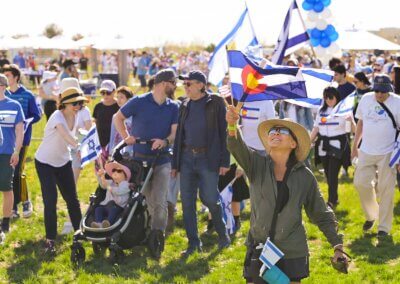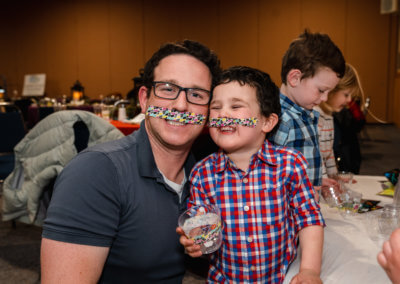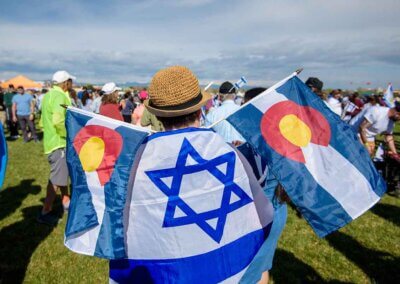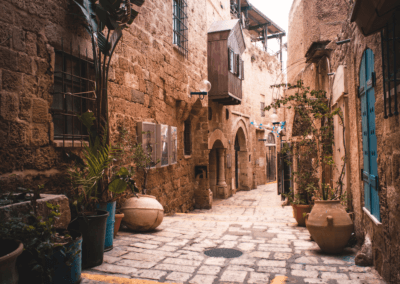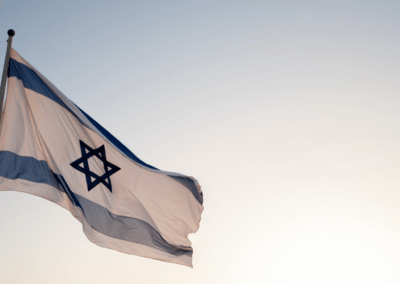Shabbat Shalom: A Message from National Women’s Philanthropy
This week, the Jewish community begins reading the third book of the Torah known in Hebrew as Vayikra, based on the opening sentence and the first word of the text, “He Called.” In English this book is called Leviticus. Most importantly, rabbinic commentators chose the name Torat Kohanim, which means the teachings or instructions of the priests. It is a Priestly Code, that centered around the laws, service and lifestyle of the priests, which were the descendants of Aaron. It was the priests’ manual for the Israelite cult in the Temple. Academic scholars question Vayikra’s time period. Was it written specifically to address the first (pre exile) Temple or did it include the second (post exile) Temple period?
Vayikra is about the ancient Israelites’ expression of loyalty to G-d, through sacrifice. It is the holiness code for correct behavior to the law. The laws provide a strict purpose for the faithful to practice and remain within the covenant. Therefore, those that practice Israelite religion remain separate from people worshiping other religions in the region. Separation and boundaries were a necessity.
G-d entered into a relationship with the Israelites so they could sanctify G-d’s name. This first Torah portion is primarily about the sacrificial cult, and Israel’s redemption through the specific offerings and practice of Aaron and his sons, the priests. The Leviticus world view is living with conforming to the prescribed laws regulated through the priests that maintained holiness through cultic purity.
In the Tent of Meeting the sacrifices and procedures are described in detail. Most often an unblemished male animal is the choice for the burnt sacrifice. Fine grain is void of gluten and first fruits of other offerings are desirable. It is difficult in this present day to relate to the detailed text about sacrifice. The blood, the entails and fat. At the onset of the textual reading the primary purpose is to provide a gift, an absolutely special gift, for G-d. This is true, but further study does reveal the Temple sacrifices supports a check and balance for the prescribed religious structure for the priests and the community. There is a mystical perspective that explains the relationship between G-d and humanity. The healing of the world. The essence of the sacrifice, said Rabbi Shnear Zalman, is that we offer ourselves in the sacrifice. It is the physical manifestation of our inner selves. The balance of cultic purity, man and G -d is maintained. RabbiJonathan Sacks, in blessed memory, remarks that the essence of the animal sacrifice reflects the animal soul within us. A repetitive line in the text tells the reader that the burning smoke is a gift, a pleasing odor to the Lord. Rashi comments, “What is pleasing to G-d, is not the aroma, but the fact that Israel is doing G-d’s will.”
These offerings are descriptive and precisely explained. The olah offering is burned entirely on the altar. This offering was of cattle, goats or sheep, and usually male and unblemished. Israelites of lesser means could offer a dove or a pigeon. There were five different meal offerings of grain mixed with oil, frankincense, and flour that was required to be free of gluten. A fraction was burned on the altar and the priests consumed the rest. The shelamim, was a peace offering which was partly burned on the altar. The priest and the owner who brought the sacrifice shared the remaining portion. There were different types of sin offerings. This was for accidental transgressions committed by the high priest, the community, or the ordinary Jew. Finally, there is the guilt offering, for betrayal and transgression.
A woman’s role in Vayikra was to assist a patriarchal society, by adhering to the laws of conduct. Women functioned in the peripheral realm. They were excluded from active participation in the priestly cult because they could not perform rites in a state of purity. Menstruation and childbirth tarnished their purity.
How is Vayikra relevant for me in 2021?
First, I can participate in synagogue services to appreciate the text’s historical relevance. Remembering that shacharit, meaning morning and mincha, meaning offering, replaces the sacrificial services. Musaf is another reminder for me of that long ago Israelite Temple religion. I can appreciate the text for the insight into that earlier world. These are the historical roots of my Judaism. I recall the physical embrace touching the massive stones of the Western Wall, in Jerusalem with love and reverence. Hopefully, I will be in Israel again soon.
Second, I can reimagine the gifts of sacrifice. My gift will not be the unblemished animals or the grains free of gluten. For me, my gifts of sacrifice are dollars. My dollars, annually and through endowment provide hope, programming, comfort and promise. My dollars support JFNA programs, JEWISHColorado and our overseas partners, JAFI, JDC, and World ORT. Educating myself and others to the Jewish community needs promotes a shared community response. We are all responsible to elevate our Judaism and it starts with each of us.
Finally, I have a personal connection with Vayikra. My father Samuel Sprinces of blessed memory was a kohen, a descendent of Aaron. This Shabbat is his yahrzeit observance of forty five years of his passing. The best way to honor him is through study and tzedakah.
Shabbat shalom,
Jacqueline Sprinces-Wong
JEWISHcolorado, Endowment & Planned Giving Chair
NWP Board Alumna
wecancook@gmail.com

